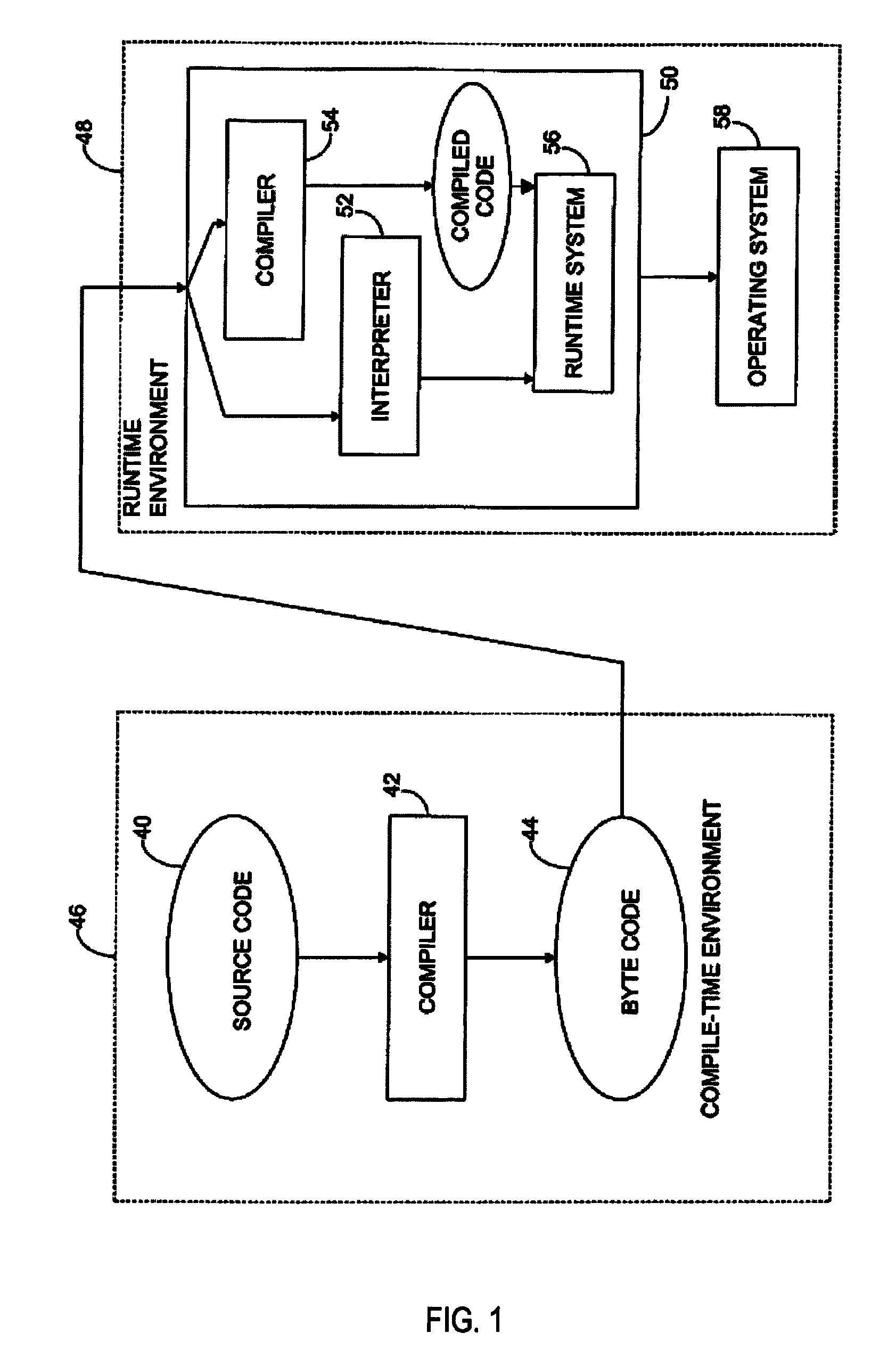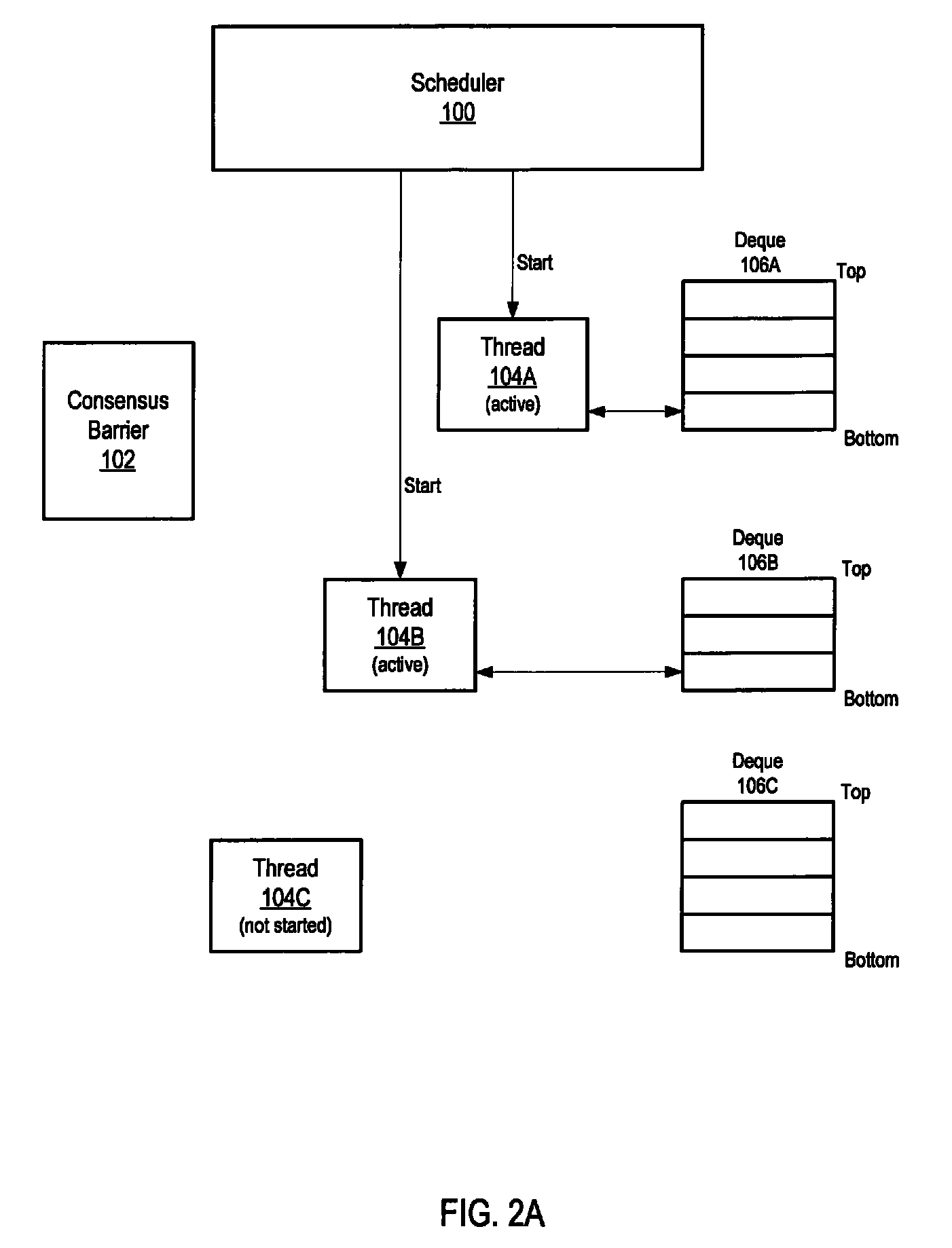Barrier synchronization method and apparatus for work-stealing threads
a technology of work-stealing threads and barriers, applied in the field of computer systems, can solve problems such as memory leakage, difficulty in restricting storage requirements to the available memory space, and system memory requirements that may grow over time to exceed system's available memory,
- Summary
- Abstract
- Description
- Claims
- Application Information
AI Technical Summary
Benefits of technology
Problems solved by technology
Method used
Image
Examples
Embodiment Construction
[0048]Embodiments of a method and apparatus for barrier synchronization of threads, for example work-stealing threads, are described. Conventionally, consensus barrier mechanisms may be used as a rendezvous for worker threads in which all the threads must rendezvous at the consensus barrier for the task to complete, allowing a suspended application to be restarted. However, conventional consensus barrier mechanisms have to wait for all the threads to rendezvous at the consensus barrier, including any threads that were not scheduled / started by the scheduler immediately. This may result in long delays, even multi-second delays, on even a moderately busy machine.
[0049]Embodiments may provide a consensus barrier synchronization mechanism, or simply barrier synchronization mechanism, that allows a “stop world” operation being performed by two or more worker threads configured to “steal” work from other threads to complete, even if one or more of the threads are not scheduled / started by t...
PUM
 Login to View More
Login to View More Abstract
Description
Claims
Application Information
 Login to View More
Login to View More - R&D
- Intellectual Property
- Life Sciences
- Materials
- Tech Scout
- Unparalleled Data Quality
- Higher Quality Content
- 60% Fewer Hallucinations
Browse by: Latest US Patents, China's latest patents, Technical Efficacy Thesaurus, Application Domain, Technology Topic, Popular Technical Reports.
© 2025 PatSnap. All rights reserved.Legal|Privacy policy|Modern Slavery Act Transparency Statement|Sitemap|About US| Contact US: help@patsnap.com



